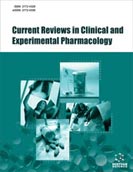Abstract
Background: Treatment with N-Acetyl Cysteine (NAC) in rodenticide poisoning has not been well established due to mixed study results and insufficient evidence. This review aimed to summarize the clinical benefits of NAC in the management of rodenticide poisoning.
Methods: This review follows the PICOS framework and the PRISMA guidelines. Pub- Med/MEDLINE, Scopus, and the Cochrane library were searched to identify the published literature from inception to September 2020, and a reference search was performed for additional relevant studies. The English language studies addressing the use of NAC in rodenticide poisoning were considered for the review. We considered all experimental and observational studies due to the insufficient number of interventional studies.
Results: Ten studies (two RCTs, four observational, and four descriptive) out of 2,178 studies with 492 participants were considered for the review. Only six studies (two RCTs, one prospective, and three retrospective studies) reported recovery and mortality. Pooled results of RCTs (n=2) showed a significant recovery rate (Odds Ratio [OR]: 3.97; 95% Confidence Interval [CI]:1.69-9.30), whereas summary estimates of prospective and retrospective studies recorded a non-significant effect. Metaanalysis of RCTs (OR: 0.25; 95% CI: 0.11-0.59; n=2) and retrospective studies (OR: 0.34; 95% CI: 0.15-0.78; n=3) showed a significant reduction in mortality, whereas pooled analysis of prospective studies recorded a non-significant effect. A significant reduction in intubation or ventilation (OR: 0.25; 95% CI: 0.11-0.60; 2 RCTs) and a non-significant (P=0.41) difference in duration of hospitalization was observed with NAC when compared to the non-NAC treated group. The quality of the included studies appeared to be moderate to high.
Conclusion: Our findings indicate that NAC showed better survival and lower mortality rate when compared to non-NAC treated group; hence NAC can be considered for the management of rodenticide poisoning.
Keywords: Efficacy, poison, rat poison, safety, yellow phosphorous, zinc phosphide.
[http://dx.doi.org/10.4103/0972-5229.151026] [PMID: 25722560]
[http://dx.doi.org/10.7860/JCDR/2015/11484.5455] [PMID: 25738016]
[http://dx.doi.org/10.1080/15563650.2018.1533727] [PMID: 30576252]
[http://dx.doi.org/10.1007/s12664-015-0583-2] [PMID: 26310868]
[http://dx.doi.org/10.5005/jp-journals-10071-23318] [PMID: 32021003]
[http://dx.doi.org/10.3109/15412555.2014.898040] [PMID: 24787454]
[http://dx.doi.org/10.1183/09031936.04.00016804] [PMID: 15083766]
[PMID: 28367412]
[http://dx.doi.org/10.1136/bmj.b2535] [PMID: 19622551]
[http://dx.doi.org/10.1136/bmjebm-2017-110853] [PMID: 29420178]
[http://dx.doi.org/10.1016/j.seizure.2020.01.002] [PMID: 31931437]
[http://dx.doi.org/10.1111/ijd.14411] [PMID: 30809807]
[http://dx.doi.org/10.1515/jbcpp-2020-0115] [PMID: 33725760]
[http://dx.doi.org/10.3109/15563650.2012.743029] [PMID: 23148565]
[http://dx.doi.org/10.4103/0972-5229.142176] [PMID: 25316977]
[http://dx.doi.org/10.1097/00004836-199509000-00015] [PMID: 8583080]
[http://dx.doi.org/10.2174/1574884715666200513090634] [PMID: 32400335]
[http://dx.doi.org/10.1002/ccr3.618] [PMID: 27525081]
[http://dx.doi.org/10.2478/folmed-2018-0001] [PMID: 30355847]
[http://dx.doi.org/10.4103/0973-4651.206530]
[http://dx.doi.org/10.1097/MD.0000000000008506] [PMID: 29137047]
[http://dx.doi.org/10.1097/AOG.0b013e31829267c4] [PMID: 23884275]
[http://dx.doi.org/10.5830/CVJA-2012-051] [PMID: 23108575]
[http://dx.doi.org/10.1016/j.forsciint.2011.06.018] [PMID: 21763089]
[PMID: 21055312]
[http://dx.doi.org/10.3748/wjg.v16.i13.1680] [PMID: 20355251]
[http://dx.doi.org/10.3109/15563659609013832] [PMID: 8941200]
[http://dx.doi.org/10.1177/096032718800700408] [PMID: 3410483]
[http://dx.doi.org/10.1016/j.toxrep.2018.10.009] [PMID: 30406022]
[http://dx.doi.org/10.4103/0972-5229.142172] [PMID: 25316973]
[http://dx.doi.org/10.4103/ijccm.IJCCM_410_16] [PMID: 28515612]
[http://dx.doi.org/10.1007/s12072-009-9151-0] [PMID: 19727985]
[http://dx.doi.org/10.1002/lt.21246] [PMID: 18161828]































